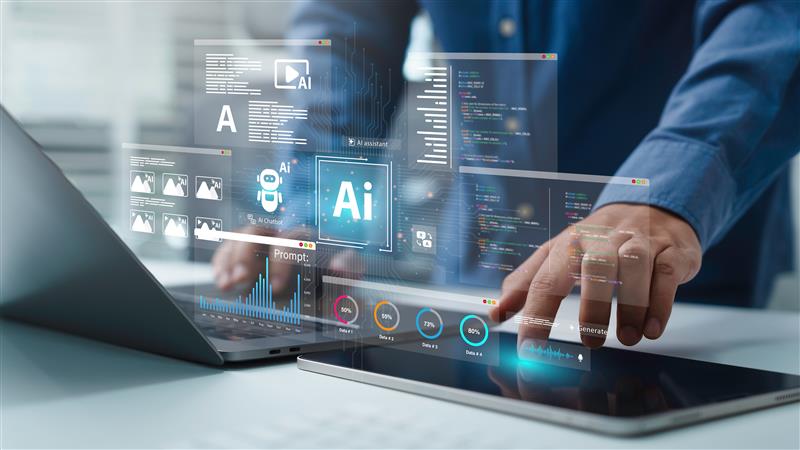The New Era Of Work: Human-AI Collaboration Is Redefining The Modern Workplace
It feels like just 20 or so years ago, artificial intelligence in the workplace was seen as a crazy concept—something reserved for massive enterprises or the cinema. Fast forward to the world of business in 2025 and it’s become one of the most transformative forces in how we work. But here’s the key: AI isn’t here to replace us—it’s here to work with us.
At Mindbreeze, I’ve seen firsthand how AI agents are shifting from being passive tools to becoming active collaborators. Much like how Tony Stark became Iron Man through the fusion of his human instincts and advanced technology, today’s employees can elevate their capabilities when empowered by intelligent systems. But the suit alone doesn’t make the hero: it’s the person inside who directs the impact.
From Automation To Augmentation
For years, the major talking points surrounding AI culminated into one word: automation. How could AI reduce costs by taking over repetitive tasks?
While that’s still part of the story, it’s no longer the most interesting or impactful one. Today, AI is being reimagined as a true partner—one that supports decision making, surfaces timely insights and enhances how we solve problems. Whether it’s helping sift through vast amounts of data or recommending actions based on real-time patterns, AI is moving up the value chain.
This is the shift from automation to augmentation. It’s not about machines working instead of humans—it’s about machines working hand-in-hand with employees to create better outcomes together.
Designing Workflows That Blend Human And Machine Strengths
Organizations seeing the most success with AI are those focused on creating workflows that capitalize on what each side does best. Humans excel at contextual thinking, empathy and navigating ambiguity. AI brings relentless processing power, pattern recognition and the ability to process vast amounts of information in seconds.
Based on my own firsthand experience, one effective strategy is to give employees a comprehensive view of the information they need—from customer histories to operational and unstructured data—all in one place. When people have access to the right insights at the right moment, they can make faster, more confident decisions.
Think of it like J.A.R.V.I.S in the Iron Man suit: always listening, always presenting the right intel at the right time, but always deferring to human judgment.
Empowering The Workforce: Skills For The Augmented Era
As AI becomes more embedded in daily workflows, the most valuable employees will be those who know how to navigate and collaborate with it. We’re entering an age where critical thinking, data literacy and the ability to question and validate AI outputs are just as important as technical expertise. Emotional intelligence, adaptability and ethical reasoning are now premium skills—not soft ones.
This is where leadership plays a crucial role. Organizations must invest in training and upskilling their teams, not just in how to use AI, but in how to think in partnership with it. It’s not enough to hand someone a powerful tool—you need to show them how to wield it with intention and confidence.
In the second Iron Man film, a rival company to Stark Industries attempts to replicate Tony Stark’s suit by producing a fleet of unmanned drones. The film’s main villain, who oversees the development of these drones, argues that removing the human element will make them more effective. However, in the end, Tony Stark and his ally James Rhodes—each piloting their own suit—successfully defeat the entire drone army.
Yes, this movie is primarily entertainment—but it also illustrates a powerful idea: the partnership between humans and AI can outperform AI alone, even when the odds are stacked against them.
Trust, Transparency And Ethical Integration
In light of the Marvel references, it’s important to remember that with great power comes responsibility. As AI systems take on more complex tasks, questions about trust, fairness and accountability become more pressing. Many employees worry about being replaced. Others wonder whether they can trust decisions made by an algorithm they don’t fully understand. These concerns are valid and must be addressed head-on.
I believe the solution lies in transparency and inclusion. When companies build systems where humans remain in control, establish clear oversight mechanisms and involve employees early in the AI adoption process, they are better prepared for success. Feedback loops that allow both the AI and the organization to learn continuously are vital.
When people understand how AI is being used—and see it supporting their work rather than undermining it—trust can begin to grow organically.
The Future Of Work: Human At Its Core
What excites me most about this new era isn’t the technology—it’s what it makes possible for people.
We have a unique opportunity to completely redesign workplaces where individuals are more empowered, more capable and more connected than ever before. AI shouldn’t be replacing the human element; it’s at its best when it’s reinforcing it, enabling us to do what we do best.
At the end of the day, technology is only as impactful as the people who use it. The future of work won’t be defined by machines or code, rather, it’ll be shaped by how we choose to collaborate with these powerful new partners.
Being superhuman at work isn’t about having all the answers—it’s about having the right tools to ask better questions, faster. The suit helps, but it’s the person inside who makes all the difference.
Latest Blogs
The Future of Enterprise AI Depends on Smarter RAG Solutions
Today’s enterprise leaders ask how to make AI meaningful, responsible, and scalable. One architectural approach stands out as organizations look beyond isolated proof-of-concepts and begin embedding AI into workflows: Retrieval-Augmented Generation (RAG).
Boosting Enterprise Intelligence with Tool Calling
Introduction: A New Era of Intelligent SearchMindbreeze understands that enterprise needs have evolved. It is no longer sufficient for AI systems to retrieve documents or surface static answers. Tool calling meets this demand head-on.


